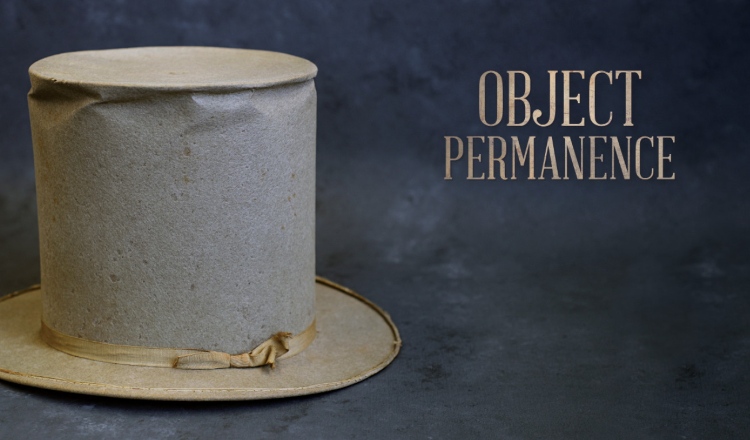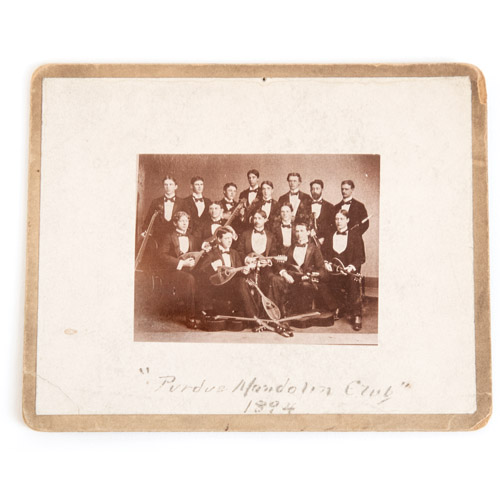
81. Mandolin Club Photo
Although Purdue is not considered a music school, its students and musical organizations have always had a strong tradition of performing popular music. During the 1880s and 1890s, being able to play the mandolin or Spanish guitar was a strong indicator of one’s sophistication, and being a member of the Mandolin or Guitar Club raised one’s status as a “sophisticated gentleman” on campus.
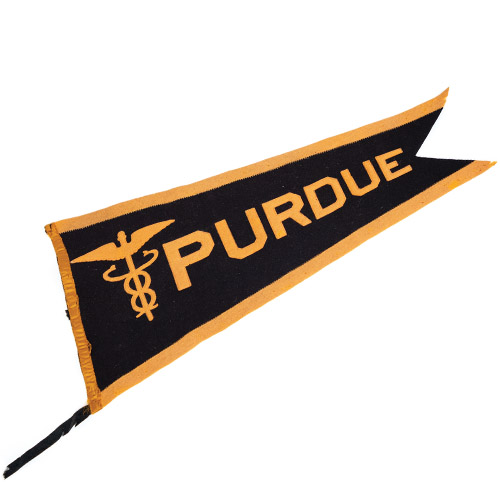
82. Med School Pennant
In the late 1800s and early 1900s, medical education in Indiana was largely delivered by private medical colleges or surgeons colleges. In 1903, the struggling Medical College of Indiana approached Indiana University about forming a college under IU’s control. Negotiations between IU and the Medical College failed and were abandoned a year later. In 1905, the Medical College approached Purdue, and in September of that year, the board of trustees accepted the offer, forming the Indiana Medical College, School of Medicine of Purdue University. In May 1906, 122 students received their medical degrees from Purdue University. In the spring of 1907, 68 men and four women graduated, including Areth C. Arnett (MD’1907), who would found the Arnett Clinic in Lafayette. Indiana University began to formally petition the Indiana State Legislature to become the sole state-supported medical college, setting off a ferocious political debate at the Indiana Statehouse. It became so rancorous that President Winthrop E. Stone closed the School of Medicine of Purdue University in 1909, transferring the entity, and the responsibility for Indiana’s state-supported medical school, to Indiana University.
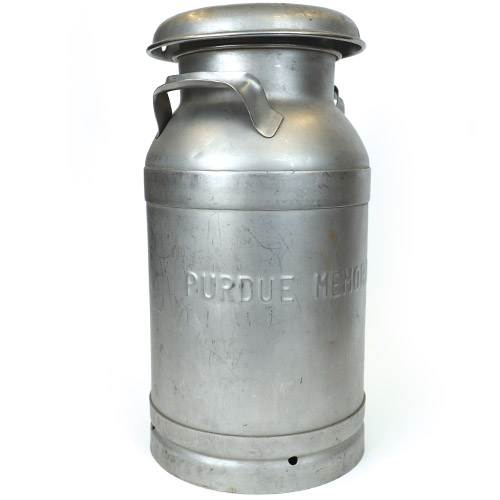
83. Milk Can
George Byers (A’52) ran a dairy business that delivered fresh milk from his Tippecanoe County farm and other farms in surrounding counties to the Purdue Creamery and dining facilities on campus. The Byersland Farm remains in the family. Of the many milk cans left by Byers, this is the only one stamped Purdue Memorial Union.
The Purdue Creamery was located in Smith Hall from 1913 to 1969.
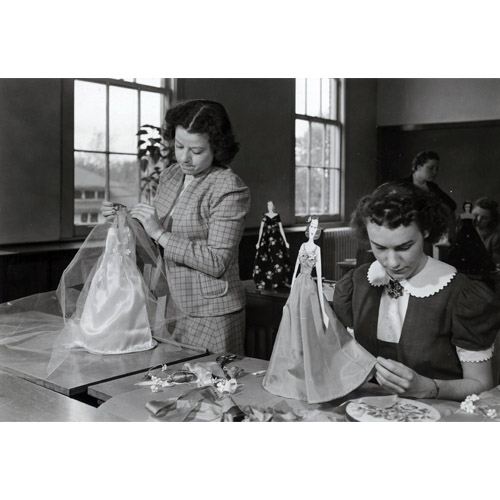
Courtesy of the Virginia Kelly Karnes Archives and Special Collections Research Center, Purdue University Libraries
84. Miniature Mannequins
In the 1930s, students enrolled in Applied Design, a costume design and illustration course in the School of Home Economics, created miniature mannequins that they dressed in fashions they designed. The 18-inch dolls were made of heavy cardboard with wigs made from human hair, spun glass angel hair, or gold kitchen cleanser brushes. Faces were painted on with expressions to match the costumes — sweet, coy, blasé, or sophisticated. An Indianapolis Star story from May 1938 featured a photo of three women with their miniature mannequins. The caption described the dolls as having “real hair, paper eyelashes, and a saucy expression.”
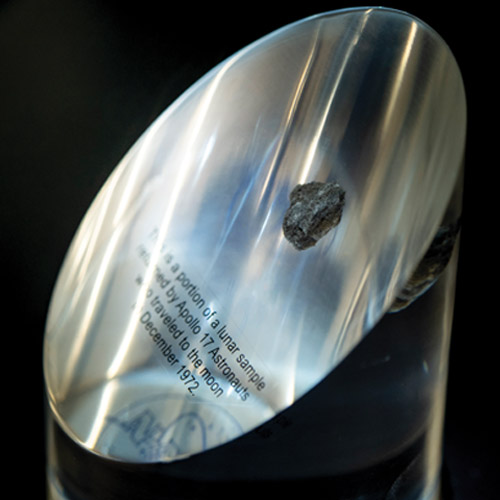
85. Moon Rock
Martha Chaffee (-S’59), widow of astronaut Roger Chaffee (AAE’57), donated a two-gram lunar sample through NASA’s Ambassadors of Exploration program. The program allows each astronaut or his survivor — from the Gemini, Apollo, and Mercury programs — the right to donate to the educational institution of his or her choice a piece of the 842 pounds of moon rocks and soil collected during six lunar missions.
The moon rock is on display in Neil Armstrong Hall of Engineering.
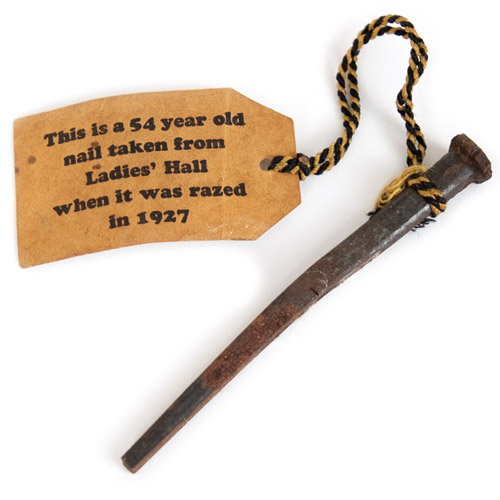
86. Nail from Ladies Hall
Ladies Hall was built around 1871 and was one of three original buildings on campus. Its design — modeled after a building on the Amherst College campus in Massachusetts — was ornate and quite different from any building on Purdue’s campus then or today. Originally known as Boarding Hall, it housed faculty and their families. When women were admitted to Purdue in 1875, the building became the women’s dormitory, and its name was changed to Ladies Hall. It was razed in 1927; today, Stone Hall stands on its location.
Ladies Hall was located near the present-day site of Stone Hall.
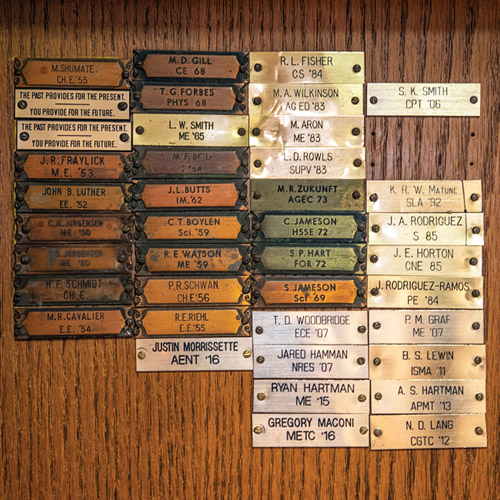
87. Nameplates
Students who live in the residence halls their entire undergraduate career have a nameplate as a permanent fixture on their room’s door. In Cary Quad, where renovations removed some older rooms throughout the years, the nameplates are preserved on plaques in student lounges.
Request a tour of Cary Quad at the University Residences Alumni and Guest Center.
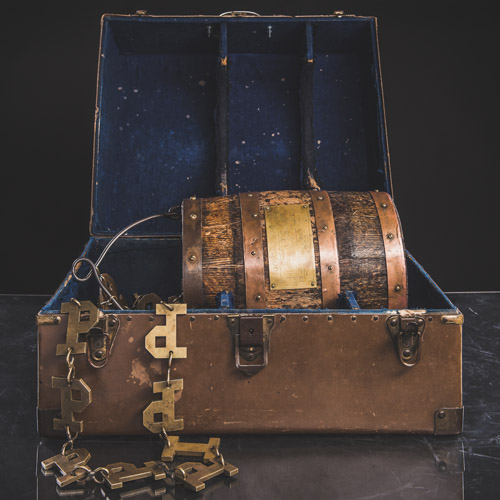
88. Old Oaken Bucket
Purdue’s first football matchup against in-state rival Indiana University was in 1891 when the Boilermakers trounced the Hoosiers 60–0. The concept of a traveling trophy was introduced by the Chicago chapters of the respective institutions’ alumni associations in 1925. An old oaken bucket was decided upon as the most typical Indiana form of trophy. When it’s shuttled between schools, the bucket is protected by this custom case — although it doesn’t do a whole lot of traveling. Purdue leads the series 74–41–6.
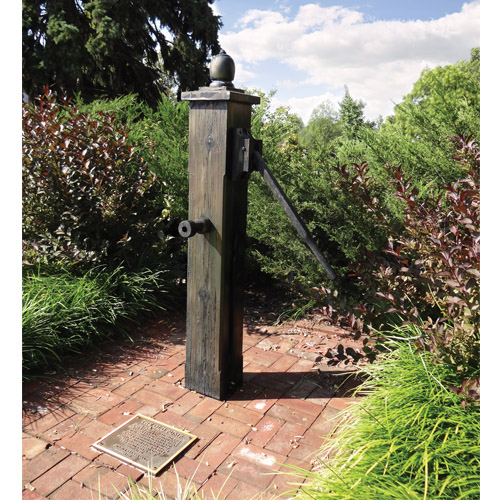
89. Old Pump
The antique pump that sits southeast of Stone Hall commemorates a tradition of friendship and romance — and recalls a custom of youthful pranks — stretching back to the University’s earliest days. The Old Pump actually predates Purdue itself. It is estimated that the well connected to the original pump was dug in the 1860s for a local farm family. The pump sat outside the now-demolished Ladies Hall. Students used the pretense of fetching water from the Old Pump to have a planned meeting with a sweetheart. The pump was also central to the pranks of the Dorm Devils, an early 19th-century group of male students who lived in Purdue Hall. One of the pranksters’ favorite tricks involved hiding in the bushes, grabbing unsuspecting passersby and dousing them under the Old Pump. On one occasion, students accidentally drenched President James Smart. Remarkably, no one was punished, although the students were certain Smart knew their identities. After several construction projects, the pump was nearly lost but was saved thanks to the efforts of students and faculty.
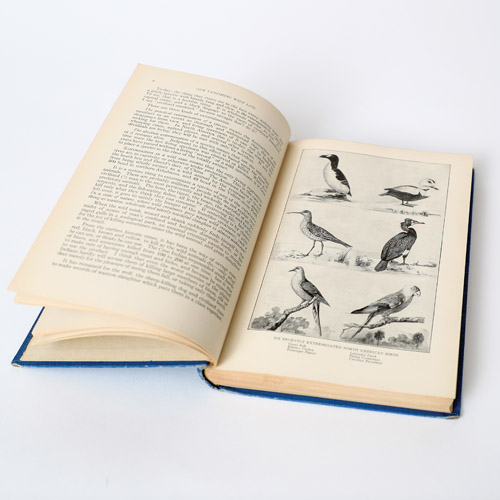
90. ‘Our Vanishing Wild Life’
Thomas Hoekstra (A’64, PhD A’72) recently donated a diverse collection of wildlife texts from his professional library to the Department of Forestry and Natural Resources. One of the volumes, Our Vanishing Wild Life by William Hornaday, is a rare 1913 first edition considered to be a culturally important work in natural resources. The collection is housed in an area called Durward’s Den, named for Durward Allen (HDR A’85), professor emeritus, who was a mentor to Hoekstra.
Thumb through wildlife texts in Durward’s Den on the first floor of the Forestry Building.

